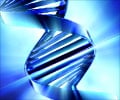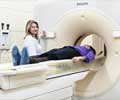Symptoms, Signs of Carcinoid Tumors or Carcinoid Syndrome
Clinical features are due to the action of the various endocrine substances that carcinoid tumors produce. Normally these secretions are metabolised by the liver, however when the liver reaches its functional limit they get released into the systemic circulation producing symptoms.
- Flushing
This is the most common feature: about 80% of patients with carcinoid syndrome exhibit flush. A flush is typically dark red (to violet) and usually involves the head, neck, and the upper trunk. It may last over 30 seconds up to 3 minutes (sometimes hours, especially when the tumor is in the lungs).
The precipitating events may be: stress, alcohol, exercise, or certain foods such as cheese.
Some patients develop telangiectasis. These are red spots that appear primarily on the face and neck. They arise due to dilation of blood vessel and capillaries. Flushing may also accompany diarrhoea, oedema in the face, excess of tears (lacrimation), and intense itching (pruritis).
- Diarrhoea
Diarrhoea is the second most common symptom. Severe watery diarrhoea can happen in most cases of carcinoid syndrome. About 85% of diarrhoeas occur with flushing. Prolonged severe diarrhoea leads to dehydration. The patient may run into deficiency of nutrients because of the impaired absorption by the body.
- Pain
Patients with carcinoid syndrome may complain of cramping pains. Abdominal pains may occur independently or in association with diarrhoea.
- Heart diseases
Heart disease occurs in up to 50% of the patients with carcinoid syndrome. Only 20% of patients with carcinoids may show symptoms. However diagnostic methods like echocardiography can help in finding the ailment earlier. Valves in the heart are commonly involved.
Other clinical features may be:
- Wheezing or asthma like features
- Vitamin deficiency: Pellagra-this arises due to the deficiency of a vitamin called niacin. The patient has diarrhoea, skin manifestations (dermatitis) and mental disorders (dementia).
Severe cases
In some patients, stressful conditions like a surgery may precipitate life threatening attacks with severe and prolonged flushing. This is termed as carcinoid crisis.
The functions of the liver are affected in severe cases. Failure of the heart or the liver that happen in the most severe cases causes death.















